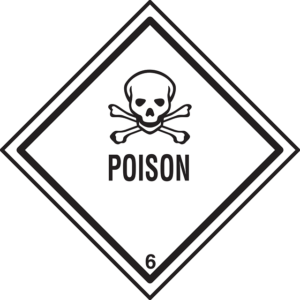
What is a “toxic tort?”
A toxic tort is a legal claim to recover for the harm caused by exposure to a dangerous substance. This can include many things, such as a pharmaceuticals, pesticide, or chemicals. These types of claims should be distinguished from injuries caused by naturally occurring environmental toxins. These types of claims are the result of substances that are manufactured by companies that cause serious illnesses in humans. In some cases, a certain chemical may have been thought to be safe, but in reality they are dangerous. As a result, toxic tort litigation can be commenced on behalf of individuals or groups of people who have been exposed to and harmed by these dangerous substances.
Potential toxic tort claims and defenses
Basically, toxic tort claims are often brought on behalf of a group of people who have been exposed to some dangerous substance resulting in injury or illness. Many toxic tort claims are brought as a class action lawsuit. One of the most well-known examples of a toxic tort class action is the asbestos claim. Some other common claims to arise brought by the residents of a neighborhood where local groundwater has become contaminated by a pesticide. Even though class actions are common, a single individual may also bring a toxic tort lawsuit.
Examples of specific types of toxic tort claims
Some examples of specific toxic torts include occupational exposure, pharmaceutical drugs, consumer products and home exposures. When people either breathe in or ingest a substance in their home which is toxic, most commonly mold exposure, there may be a toxic tort claim. There are also various consumer products that people purchase, such as pesticides, which cause unintended injuries or illness.
Occupational exposure occurs when industrial workers are exposed to high levels of toxins for a short period of time or at lower levels over an extended period of time. There are also cases where pharmaceutical drugs cause unintended side-effects such as Zoloft, Prozac and a wide-variety of other drugs.
The elements that must be proven in a toxic tort case
As with every other type of personal injury claim, there are specific elements that a plaintiff must prove in a toxic tort case. Those elements will depend on the legal theories involved. However, the basic elements include that the substance was dangerous, the plaintiff was exposed to the substance, and the substance caused harm.
Types of defenses often used
You can expect that the defendants in a toxic tort case will mount a vigorous defense. The first tactic is to poke holes in a plaintiff’s case by presenting evidence that the plaintiff cannot prove all of the necessary elements of their claim. Defendants may also try a more procedure-based defense, such as establishing that a plaintiff did not bring their toxic tort lawsuit within the applicable statute of limitations. In order to prepare for these potential defenses, it is important to get your personal injury law firm on board as early as possible.
Who should you sue in a toxic tort case?
Deciding who to sue in a toxic tort case is another challenge that cannot be overlooked. One major obstacle is determining exactly who manufactured a dangerous product, which is not always as easy as you think. For example, some drugs are actually manufactured by several different pharmaceutical companies. If the patient develops a related health condition several years later, it can be very challenging to determine which company manufactured the particular drug the patient took. Similarly, residents who live in an industrial area might claim that their health problems are caused by airborne contaminants in the area, but may not know which local factory is actually responsible for releasing those contaminants.
Most common parties to sue in a toxic tort case
While not every one of these examples are appropriate in every type of toxic tort case, the following list can at least get you thinking.
- manufacturers and distributors of chemicals
- manufacturers and distributors of machines or devices that expose workers to chemicals
- owners and lessors of premises where the plaintiff was exposed to toxic chemicals
- manufacturers of equipment that failed to keep the plaintiff safe from chemicals, or
- companies that stored the chemicals.
Ultimately, the personal injury law firm that handles your case will investigate and be able to better determine which parties should be named in the lawsuit.
If you have questions regarding toxic torts, or any other personal injury concerns in Arkansas or Missouri, please contact the Cottrell Law Office for a consultation, either online or by calling us as (888) 433-4861.


